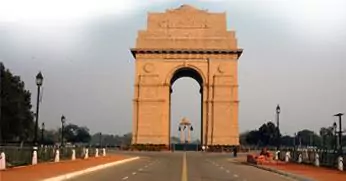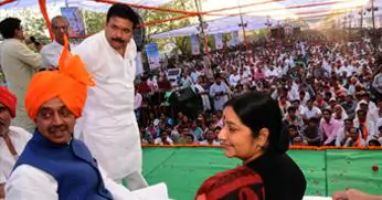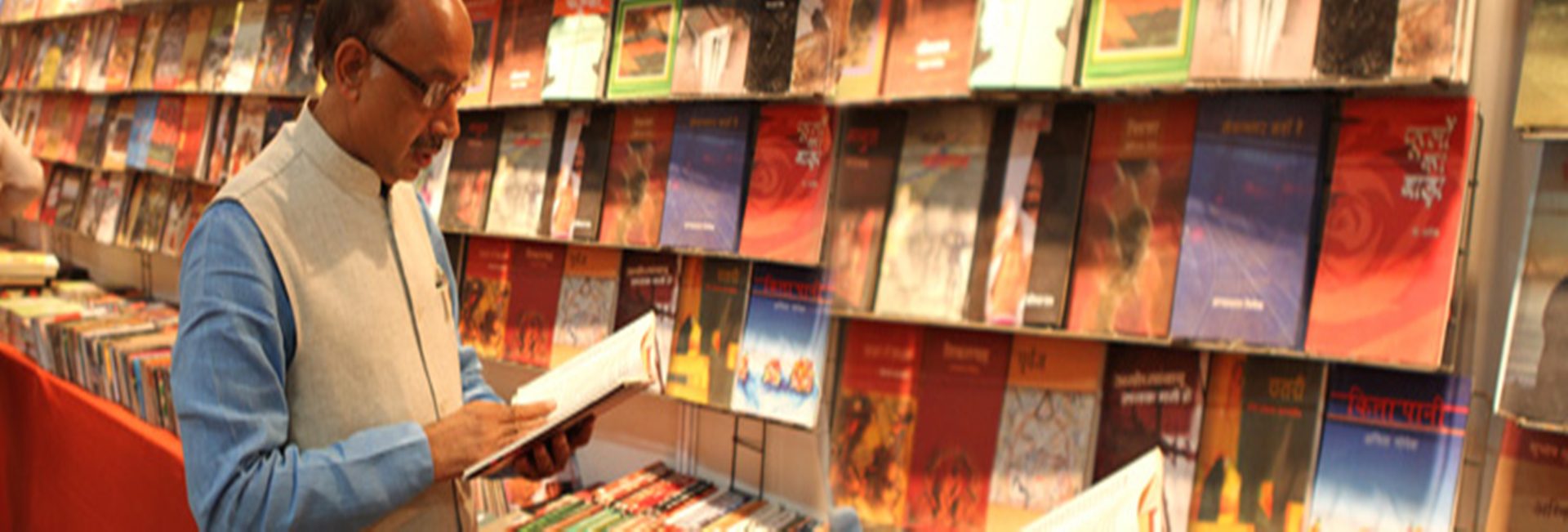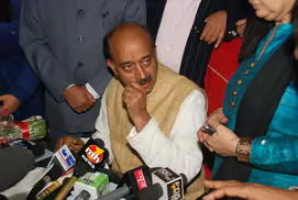Education
Home / Culture & Heritage
I have a keen interest in exploring and learning about culture, traditions, and heritage. Chandni Chowk, my former parliamentary constituency, is a perfect example of the multicultural and multi-religious India. On a street stretching barely a mile stands a Mosque, a Gurudwara, a Temple and a Church. On several occasions, I have fervently expressed the need to get Chandni Chowk recognized as a heritage city by the UNESCO. I reasoned by showcasing the rich culture of the walled city in my two books: “The Emperor City” and “Old Delhi and the Walled City”. I am also humbled to receive the Global Excellence Award and the prestigious Sur-Sadhna Award for my work in the field of Culture, Heritage and Development.
Chaudhvin ka Chand
In 2001, we took a major step to revive the old glory of Chandni Chowk through a two-day festival called ‘Chaudhvin ka Chand’. The festival involved restoring the 3.5 km stretch, from the Red Fort to Fatehpuri Masjid. After the restoration, the traffic was limited to only 200 rickshaws and 8 open buses. All the other vehicles were made to park at Red Fort to avoid cramping the Chandni Chowk area.
As a part of celebrations, 282 houses, 599 shops and all buildings of cultural importance were renovated and illuminated. The illumination of Red Fort and the addition of greenery to Chandni Chowk ensured further enhanced the beauty of the area. The entire locality turned vibrant; even the lamp posts were refurbished. Several kiosks were set up to sell traditional crafts of Chandni Chowk and to offer the exotic cuisines of old Delhi.
I realized beforehand the impact of the festival on the general morale of the local people and ensured the highest standards were maintained. The veteran theatre artists Amir Raza Hussain and Mrs. Raza Hussain were specially roped in to design the concept and assist in organizing the event. To promote the festival, I led a procession “Heritage Walk” across the walled city along with ornately painted and colored elephants followed by flower-decked tongas. Besides to preservation of the heritage of the walled city, the festival also helped in strengthening harmony in the multi-religious area like Chandni Chowk.
Other key steps taken for the redevelopment of Chandni Chowk include renovating Haj Manjil, restoring Urdu Poet Mirza Ghalib’s haveli, promoting Ganga-Jamuni tehzeeb, building Marghatwale Hanuman Mandir, and restoring heritage buildings like the Huxar Haveli (the place where the baraat of Pt. Nehru stayed) and Chunnamal haveli.
Development Board
Another step that received appreciation from the common people was to have a single body-led re-development of the walled city. A meeting involving leaders of religious groups, social activists and local citizens other stakeholders was convened to discuss the growth and development of old Delhi areas. I suggested constituting ‘Walled-City Development Board’ for conservation and holistic development of culturally important buildings such as Havelis, heritage homes and memorials. The body would constitute the representatives from government agencies pertaining to power, water, transport, police, and cleanliness among others for timely resolution of all issues.
Walled City Museum
A museum depicting the glorious 350-year old history of Delhi’s walled city was set up in a 100-year old heritage building at Lahori Gate. It was the first-of-its-kind museum that was established utilizing Rs. 75 lakh from my MPLAD fund. The museum brought together the lifestyle, heritage, architecture and composite culture of Chandni Chowk under one roof. It had a rare collection of old artifacts, photographs of Havelis in the 16th century and artifacts of Shahjahanabad such as Jharokhs and Jaalis. Details about this collection and more are extensively featured in my book ‘The Emperor’s City’, a prologue of which was written by Shri Atal Bihari Vajpayee. The museum had been a tourism spot for domestic and foreign visitors to Delhi.
Kite flying
Kites are a special sort of aircrafts that have held the world’s fascination for a long time. Kite-flying has been a symbol of communal harmony in India since ages; it was at its peak during the Mughal era. It’s been told that the emperors along with their Begums and Shezadis would fly kites for entertainment. However kite-flying is dying in India lately owing to lack of encouragement. I wanted our future generations to continue to enjoy this wonderful sport, and hence I began organizing the “All India Kite-Flying Tournament” in 2002 at Red Fort after a gap of 30 years. The event oversaw 120 teams from all over the country competing for 21 days. The festival was graced by veteran kite flier, Nasseruddin sahib, who brought with him several kites that were made 150-200 years ago. Since then I’ve been organizing an exhibition with kite-flying tournaments every year.
Later, I also set up a museum in 2003 to highlight the history of kites. It included kites from across the world, detailing wonderful information about kites and art of kite-flying. This initiative helped me realize the importance of the kite manufacturing market, Lal Kuan, in keeping this tradition alive. I asked the then Union Minister of Commerce to include kite manufacturing in the small industries umbrella. I recall an event where I later received a rousing welcome by Lal Kuan kite sellers.
Dharmapura Haveli
A project close to my heart, which we finished a couple of years ago, is the restoration of private property in Old Delhi. Over the course of six years, the 19th-century Dharampur Haveli was painstakingly transformed from tatters to an exquisite boutique hotel. The elaborated architectural elements were restored while keeping the original spatial configuration unchanged. Dozens of dedicated craftsmen and laborers worked with traditional materials and special construction techniques alongside modern technologies to carefully return the Moghul-era building to its former splendor. My son Siddhant had been a big support to me in this project all through the restoration work. It is further heartening that UNESCO recognized the restoration work with Asia-Pacific Award for Cultural Heritage Conservation, mentioning that the project serves as an inspiration for restoring other sites and Shahjahanabad as a whole in all dimensions.
Vision for Delhi
My visions for Delhi stems from these inspiring words of Swami Vivekanada. I sincerely believe that Delhi has enough number of brave, bold men and women who can make it not only one of the best cities.
My vision for Delhi is that it should be a city of opportunities where people

Dog Menace






Latest Updates
People Says

Vijay Goel is a national leader with wider vision and worked on the ground in Delhi.
Shantanu Gupta

No cricket with Pak until terrorism stops, says sports minister Vijay Goel Finally! Kudos for a much needed call!
Amrita Bhinder

Simply will appreciate Vijay Goel’s working style, witnessed his personal attention to west Delhi – Paschim Vihar ppl even at late hours.
Neerja

One must appreciate how Vijay Goel is working so hard and looking out for all sports. One can feel the change. Best wishes!
Saurabh Thapliyal
Vijay on Issues









Achievements




Vijay's Initiatives



